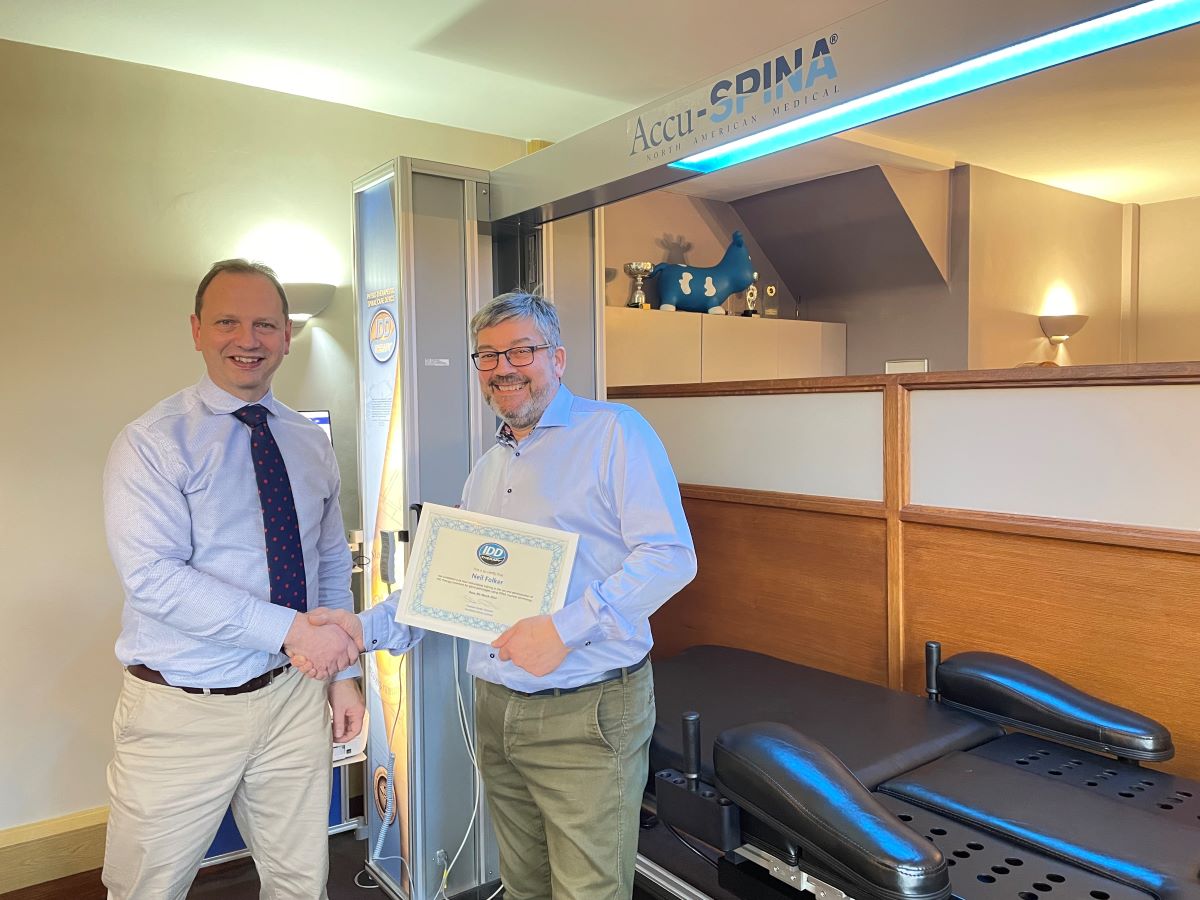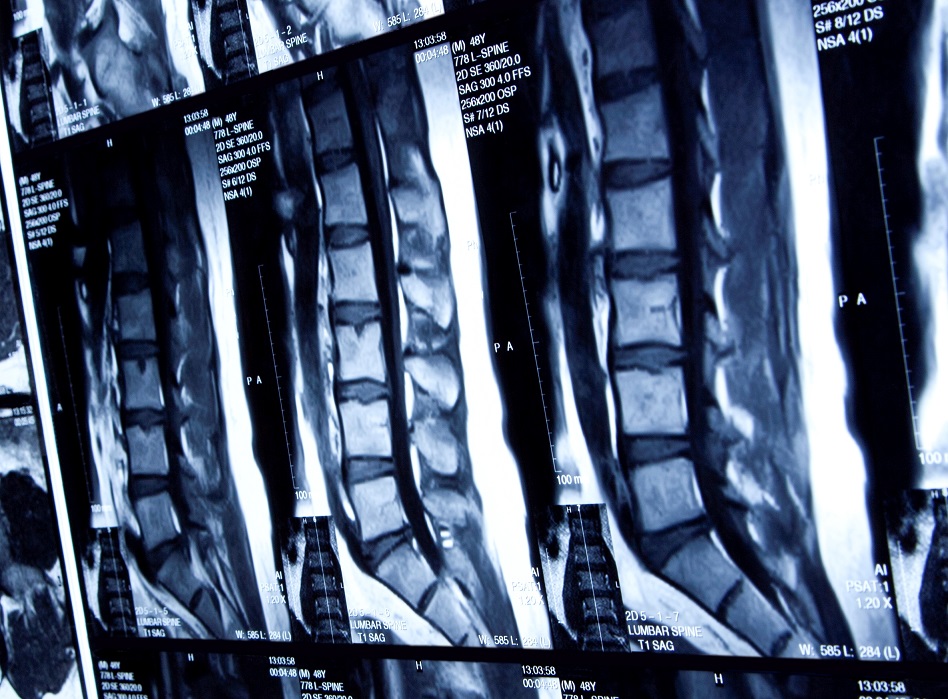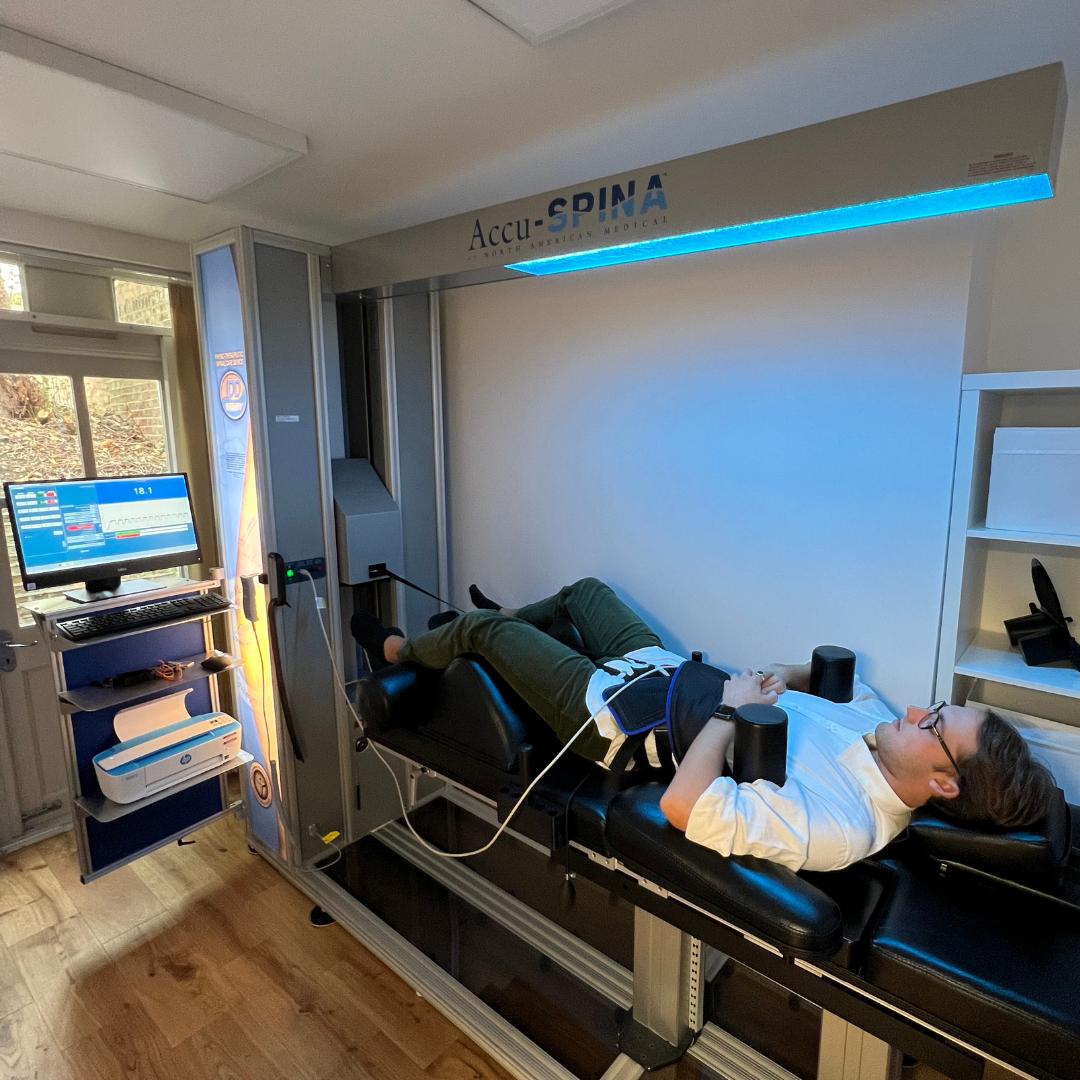At a recent IDD Therapy installation, we recorded a video to demonstrate feature of IDD Therapy which separate it from traction. Watch here: (scroll to click start video).
IDD Therapy Newsletter PDF Spring Summer 2024
What’s changing in spine care? A lot! Do you remember the first time you saw a Tesla? Do you remember the first time you heard about a bagless hoover … called a Dyson. Or the ad for a thousand songs in your pocket – the ipod. With a lot of complex thinking about back pain, we’re just keeping it simple.
The latest IDD Therapy newsletter is out with a snapshot of what will be a seismic shift in the way physical therapists, osteopaths and chiropractors deal with unresolved spinal pain.
As part of the process, we provide clinics with hard copies of the newsletter to share with colleagues, consultants and GPs so that they can see the changes and the solution right here right now for patients.
Because if a patient with a bulging or herniated disc is not responding the standard treatment, we can do so much more without them going from pillar to post, trying medications, perhaps a steroid injection or two, coping strategies etc. IDD spinal decompression is the most significant scalable solution, it’s precise, duplicable and measurable.
There is a body of evidence, it will need more before we get NICE approval, or we get into the NHS but that’s fine for private clinic because patients who are fed up, in pain and want to improve their quality of life.
Spinal Decompression Norwich – IDD Therapy at Norwich Spinal Health
When clinic director Neil Folker suffered a disc prolapse, he was told he would need surgery.
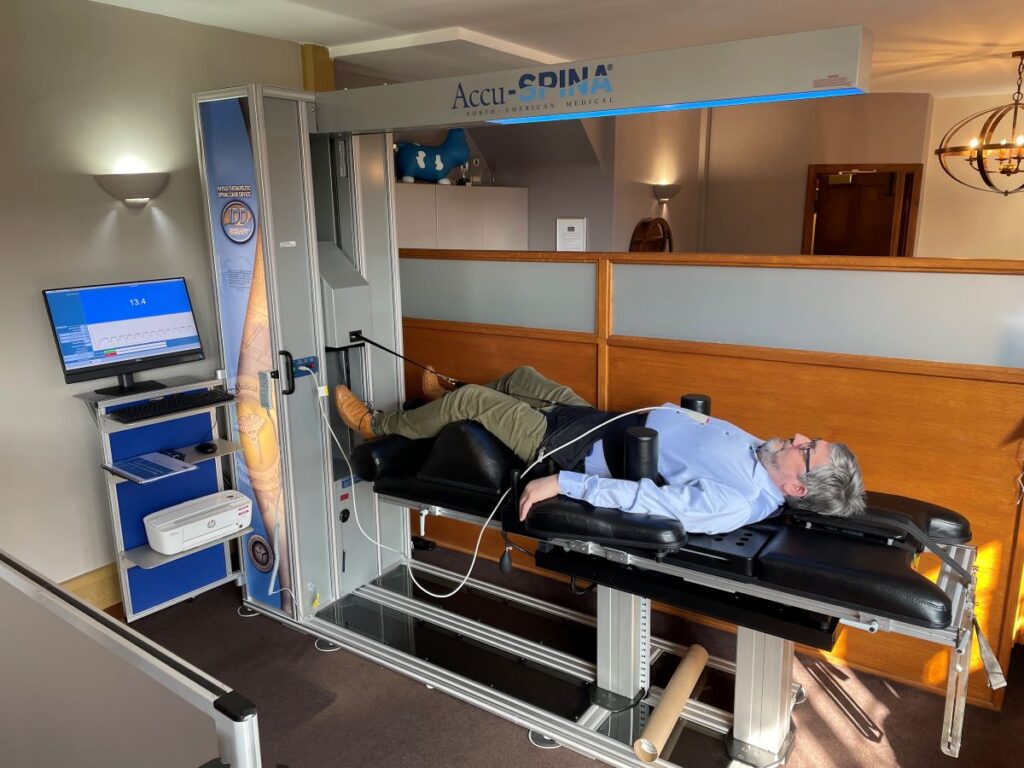
Reluctant to face the risks and inconveniences of surgery, he travelled to a clinic providing IDD Therapy and underwent a course of treatment.
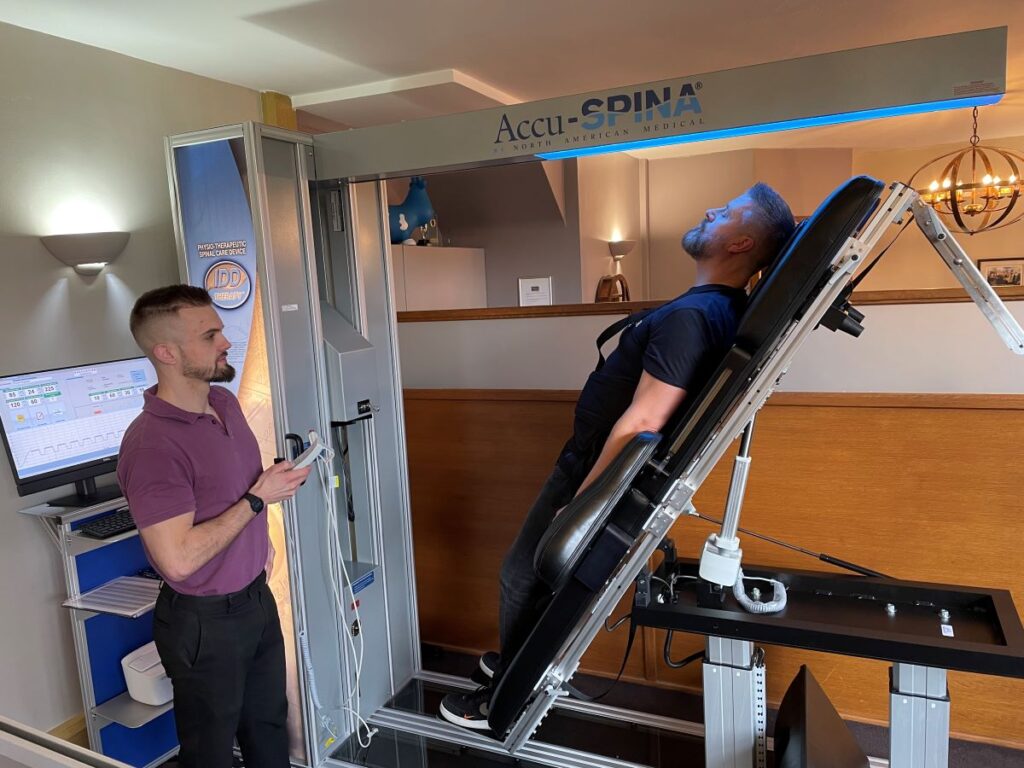
With a well established and successful chiropractic clinic in Norwich, Neil felt what IDD Therapy Spinal Decompression had done for him and brought an IDD system (Accu-SPINA) into the clinic so that he and his team could do more for patients with unresolved disc problems.
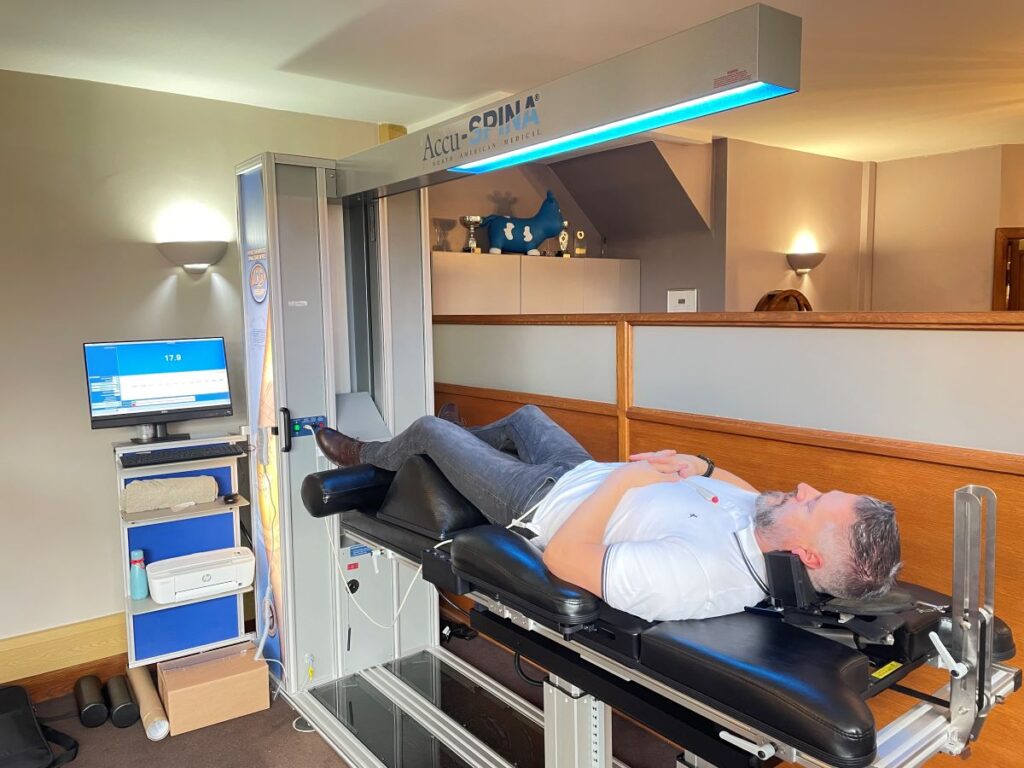
We are delighted to have such a prestigious clinic in the UK provider network.

For appointments:
Tel: 01603 216430
Upskilling MRI understanding for physiotherapists, osteopaths and chiropractors – a vital skill – Go2Imaging course
It would seem that many MSK courses do not go into great detail on MRI interpretation. Reliance is put on the report provided by the radiologist.
However as clinicians develop, there is real value in getting stronger at understanding MRI scans. This is both to better manage patients and vitally, to be able to pick serious pathology as things can be and are occasionally missed by radiologists.
I work with clinics providing IDD Therapy spinal decompression. The patients are typically chronic and many have had or are considering getting an MRI scan. Clinicians I work with all progress their MRI understanding skills.
Go2Imaging
Go2Imaging provides a six hour training course for MSK clinicians with an interest in back pain looking to improve their understanding of MRI.
The course was produced by Osteopaths Rob Shanks and Darren Chandler of SpinePlus clinics in London and Essex. Rob provides IDD Therapy at two of the clinics.
There are six modules. The first module is free and the course is only £275 (approx. USD350).
We provide the training free to new IDD providers, with 100% excellent reviews.
https://go2imaging.com/lumbarmri/
Not just a useful skill, but a vital skill.
In 2023 I interview Rob for the Spinal Decompression podcast where he spoke about his experiences with IDD Therapy and talked about the MRI course.
Being able to understand MRIs can seem daunting but the value it brings to clinicians is immeasurable. Even something simple like showing patients fat in muscle is a powerful way to connect with the reason for them doing strengthening exercises.
We are commonly interested in the disc itself and correlating symptoms to what can be seen on the scan. It is not uncommon for MRI reports to lack certain detail a clinician may want reporting on.
This is not diagnosis by MRI rather it is a powerful tool. And it is of course immensely valuable for ruling out red flags.
When I interviewed Rob for the podcast, there was a stand out observation from him.
He described having a defibrillator in his clinic and learning CPR. Yet in all his time as a clinician, he had never had to resuscitate someone.
However, he reported that each year he sees two to three scans where life threatening conditions have been missed, such as cancer.
That is not a criticism per se. Nobody is 100% correct all the time but the extra pair of eyes means clinicians can work as a team to better serve the patients.
Since back pain is the number one condition seen in MSK, improving MRI understanding is a logical and valuable skill progression.
Note – We don’t receive commission from the course. We are happy to recommend it having known Rob and Darren for many years.
Avoiding 2024 Resolution Clichés – Serving Unresolved Spinal Conditions To Grow Your Practice
We’re approaching the time of year we might call resolution season.
Or, should that be resolution cliché season.
“Make this the best year ever … again!’
Life isn’t like the (fake) instagram reels.
Let’s be real, most of us are not going to exercise like Kobé Bryant.
We won’t take ice baths and become Wim Hoff.
And just because we have a business, doesn’t mean we have to become Sir Richard Branson ….
And that’s ok.
But when it comes to a clinic business, what would Dec 2024 satisfaction look like?
Be as you are? If that’s good for you, great.
20% growth? 50% growth?
Nice.
But growth in what?
If that means working 20% more, maybe not.

Let’s be direct about growth.
When I had a clinic for 8 years, (UK’s first ‘Disc Clinic’ sold last year), patient satisfaction and successful outcomes were most important. That was something we cared about every day.
But each month the thing I looked at as a business owner was Income minus Expenditure.
That’s the left over money, profit, for clinic investment, for pensions, a day off, for holidays etc.
What is your current fixed overhead, rent/mortgage, salaries, insurance etc?
If you could pay all of your overhead with a new income stream, would that be interesting?
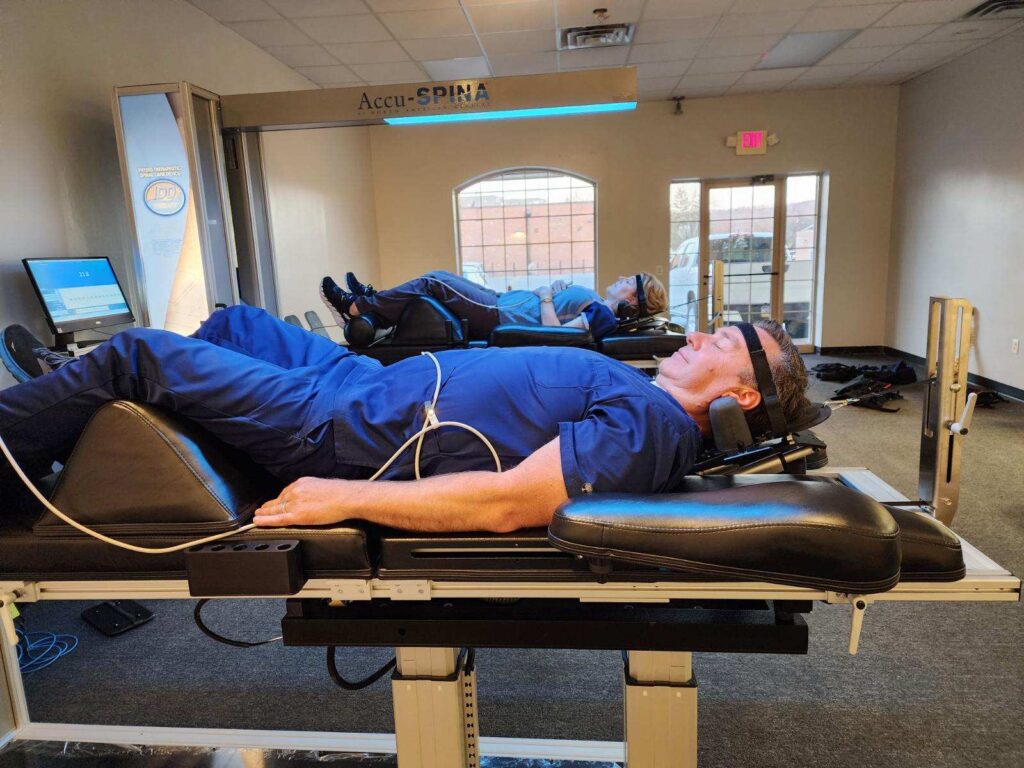
What would achieve that for you?
Staff / Associates – take on people to add income to the business. That will do it, maybe. You need to market them (cash) and it takes time.
Shockwave, laser, tecar, gait analysis – get better outcomes. But note the focus on the tech and not the condition.
How much extra income will you make from these adjuncts, or do they simply allow you to stay relatively competitive and not go backwards?
Our business is helping clinics help patients with unresolved herniated discs, ddd, sciatica and spinal stenosis.
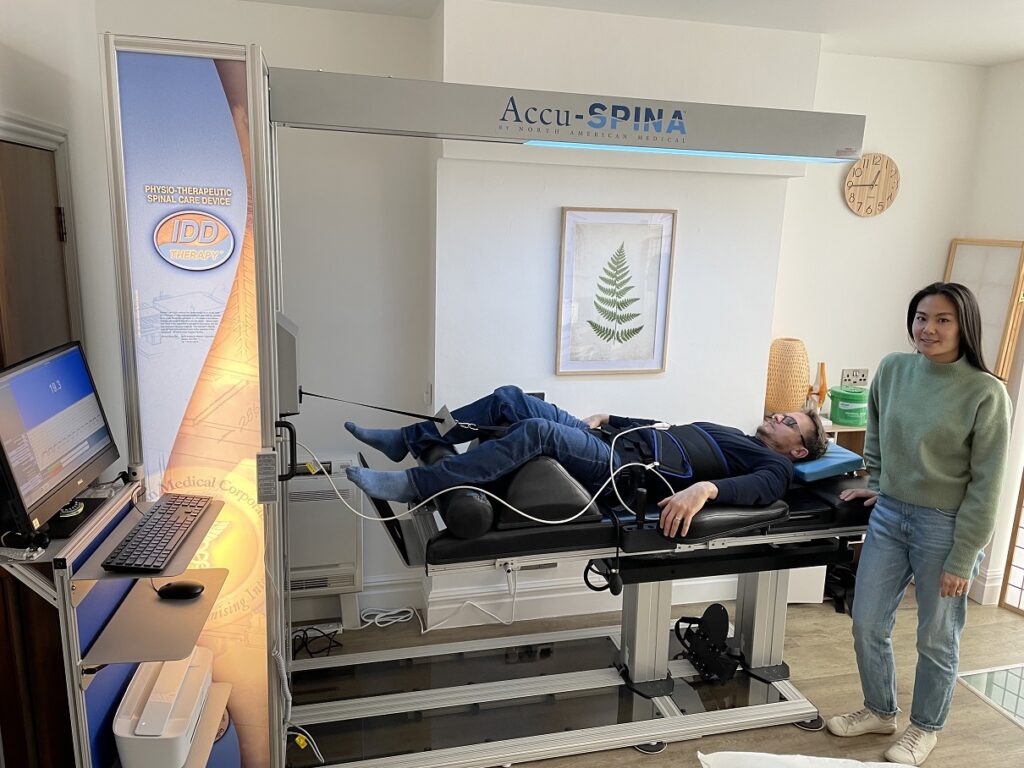
With IDD Therapy Spinal Decompression we aren’t talking IDD. We’re offering a service to help people in need in the largest MSK category – back pain.
Here are some quotes from IDD providers (If you’re thinking I wrote these, I am happy send you the fully disclosed testimonials):
“I wouldn’t chose any alternative solution to IDD Therapy for what it aims to treat. It is a very valuable asset and most importantly, it works”
“I only wish I’d undertaken this journey five or ten years ago! However, with such exciting growth, the future is huge”
“Doubled Turn Over. Doing IDD 8.5 years and typically do 30-45 IDD treatments a week.” (two room practice)
“We have been able to get very good results for the most debilitating conditions, such as nerve entrapment.
“IDD has enabled us to increase our turnover by at least 6 figures.”
Now if clinics weren’t getting the results for patients and their business, I would not be doing this for so long.
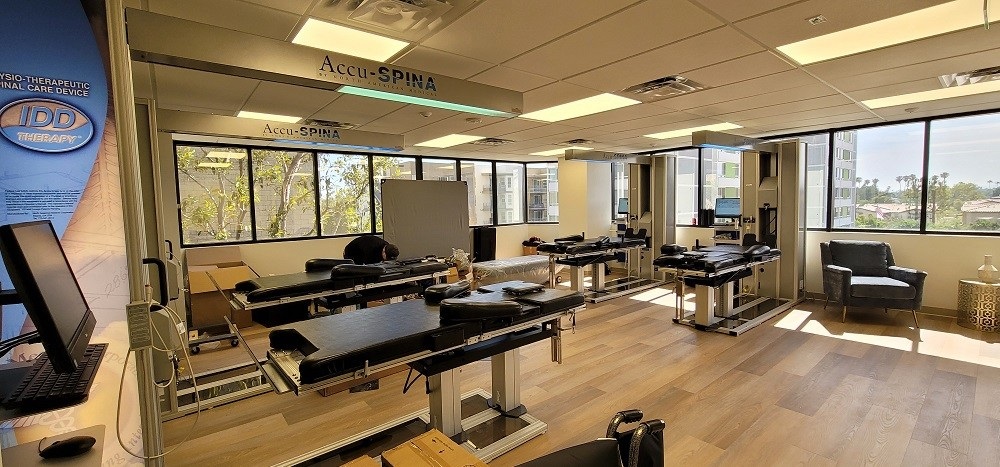
If you are thinking about ways to grow your business in 2024, build a brand asset for your future, a treatment which lets you leverage your team, a profit stream which makes 20-50% growth a real possibility WITHOUT burning you out, there is nothing which comes close to IDD.
IDD can pay all or a good chunk of the overhead of an average clinic.
For a modest deposit and easy finance for your Accu-SPINA, you own the asset. In the US, no deposit may be required.
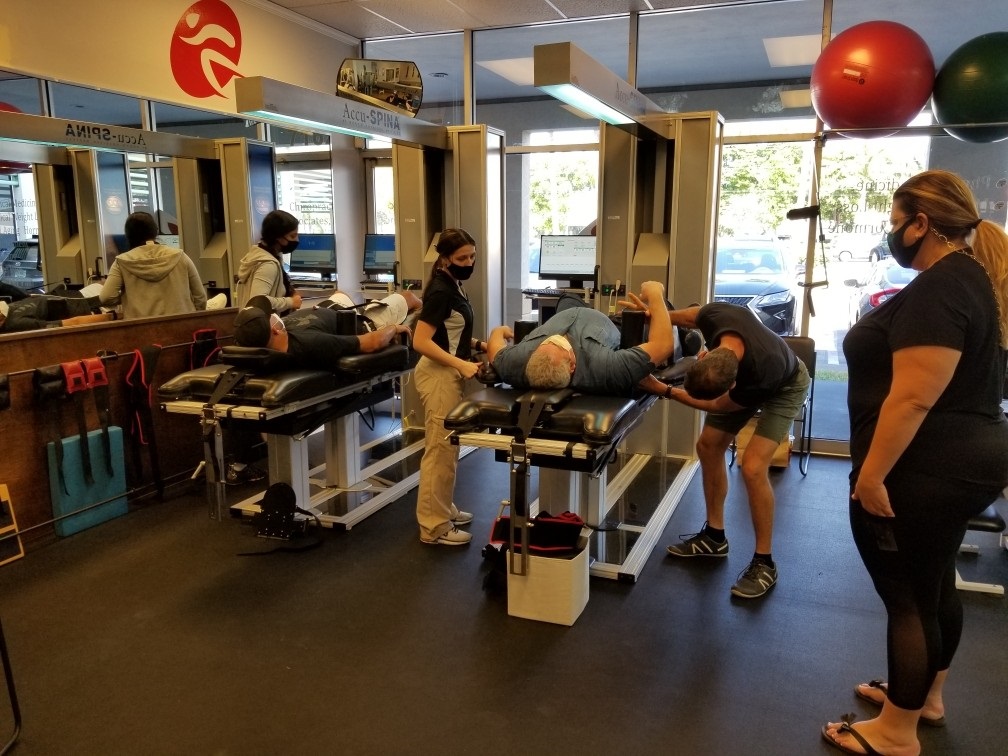
Our motto is think global act local. I took that from a multinational I used to work for before I came to IDD.
It means we have a macro vision but doing things at the micro or local level.
And the other saying I use and came up with is
‘your success is our success is your success‘.
That means as our customer, we want you to be successful. Because when you are successful, that helps us be successful. Standard stuff.
But the final add on to this is … is your success. As we get more successful, we can put more back and that in turn helps you be more successful.
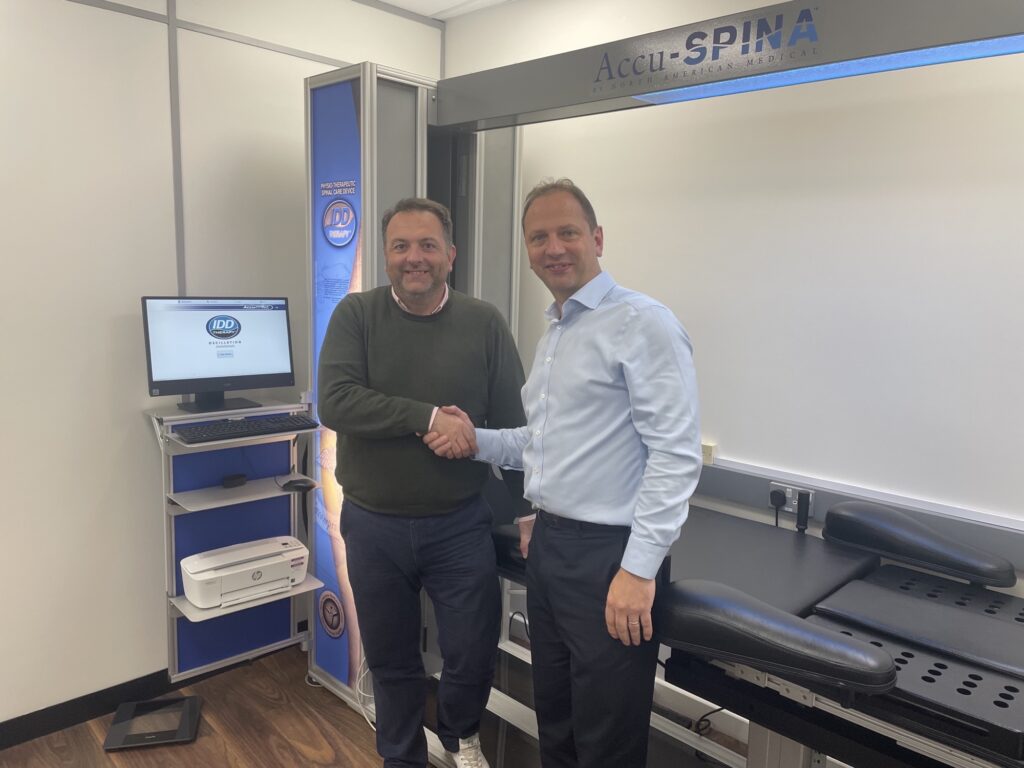
To kickstart 2024 and the next five years, get the ball in motion now and then crack on with Christmas and New Year.
Install Jan or Feb means in 2024 you set off with purpose and you won’t be a spectator.
In the big picture context of over 2,000 Accu-SPINA systems globally, this is a unique opportunity to do more for patients and grow your practice, with a powerful clinical USP, helping patients get off meds and avoiding injections and surgery.
Let me know if you’re ready.
Best wishes,
Steve
Stephen Small
Clinic Development Director
IDD Therapy Spinal Decompression
Cel: 770 999 0047
Mob: +44(0)7817 995886
Schedule a call with me on my Calendly
Download a prospectus:
UK & Int’l: Get Info Here
USA: Get Info Here


